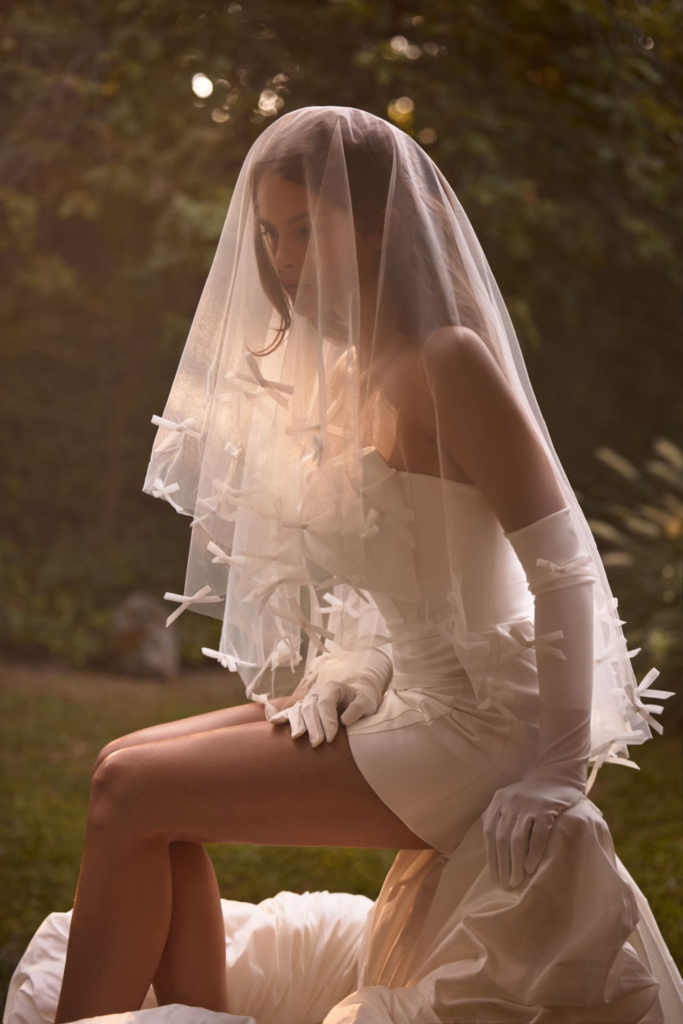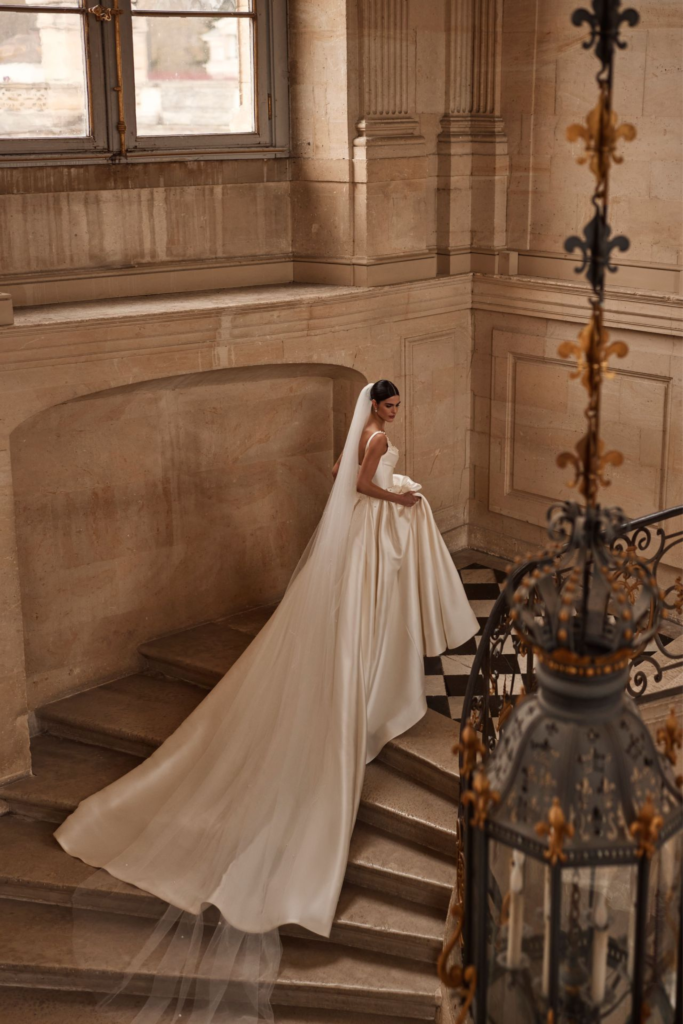The oldest part of the wedding ensemble, the veil, is a tradition that predates the formal wedding gown itself. Ranging in popularity throughout the centuries, they add that extra air of bridal to your wedding look. Here is the ultimate guide for brides-to-be in their quest for the ultimate bridal accessory.
Lengths
Birdcage
Brides who dream of the romanticism of a veil but want something a little more low-key can opt for the birdcage or petal. Worn just over the face, this style is best suited to high neck or elegant gowns. This is a great option for registry office brides without the drama of a longer covering.
 Bertie Watson
Bertie WatsonShoulder Length
The ideal length is if you wish to show off any detailing on the gown's back, bust, or waist. Falling in multiple tiers to the shoulder, the waterfall veil is a viable option for detailed gowns, as is the Spanish-style mantilla, which consists of delicate lace that drapes over the shoulders.
 Anne Barge
Anne BargeMid Length
The most popular length falls roughly around the hips and can feature many layers that suit shorter dresses and more traditional gowns. Also falling into this category are circular and fingertip veils, which fall just past elbow length and are usually worn with full-length gowns without trains.
 Monique Lhullier
Monique LhullierFull Length
Creating the “princess look”, a longer veil fashions a more dramatic effect and works best with full-length dresses which feature trains. Cathedral length, which is the longest veil style, can stretch out for many feet and is best known for the wedding of Princess Diana to Prince Charles. The chapel length is slightly shorter than this and measures between six and seven feet.
 Berta
BertaWidth
Brides can choose from a variety of widths if they wish to create a fuller or sleeker appearance. The general rule of thumb for this is that the width and fullness of the skirt should dictate that of the veil.
 Monique Lhuillier
Monique LhuillierTier
Veils can vary between one and three tiers and are influenced by the gown style; tiers are often used to create a more romantic effect for brides. A one-tier veil is best suited for a simple or sophisticated look, whereas traditional or romantic gowns work best with a two or three-tier veil. Typically, a blusher will make up one of the layers; this is the part of the veil worn over the face when walking up the aisle. Superstition believes that the veil covers the bride's face to ward off any evil which may threaten her happiness. This is an optional add-on that is more traditional and seen as quite romantic; the blusher can range in length, with brides advised to opt for at least shoulder length in their veil as the blusher normally falls 30 inches long. When sampling blushers, it is important to try various lengths to see how they frame your face and the elegance this can bring. Ensure you choose the correct length so the blusher can flip over the back of your head and sit comfortably for the first kiss. Brides should also ensure that the various tiers will not hide any detail on the dress. Consider booking a hair trial for the first dress fitting, as this is the ideal opportunity to examine veil placement.
 Milla Nova
Milla NovaThe Finishing Touch
When choosing embellishments or colour, the veil should complement the gown but does not need to be a perfect match, so don’t obsess over this! If you are adding embellishments to your veil, such as lace or ribbon trim or sequin or pearl embellishments, ensure they do not compete with your dress. If your gown is elaborately embellished, keep your veil minimal and simple.
 Milla Nova
Milla Nova
